Benutzer-Werkzeuge
Seitenleiste
Diese Seite zum Buch hinzufügen
Diese Seite aus Buch entfernen
Dies ist eine alte Version des Dokuments!
Inhaltsverzeichnis
Snaiks
Signals and Systems from KiCad to C**
{{ ::snaiks-logo.png?nolink&200 }}
7.4.2016
—-
===== Introduction =====
Signals and Systems is here a collection of C classes on one hand, and a collection of corresponding KiCad components on the other hand.
It's purpose is to create complex systems by drawing them in KiCad's schematic editor and generate out of the netlist a working C++ code, which also compiles for micro controllers without dynamic memory allocation.
It can be used to implement PLCs or digital signal processing like filtering.
The C++ classes are based heavily on templates, so most of the components can be used either for floating point or for integer calculations.
===== Mini-Demo =====
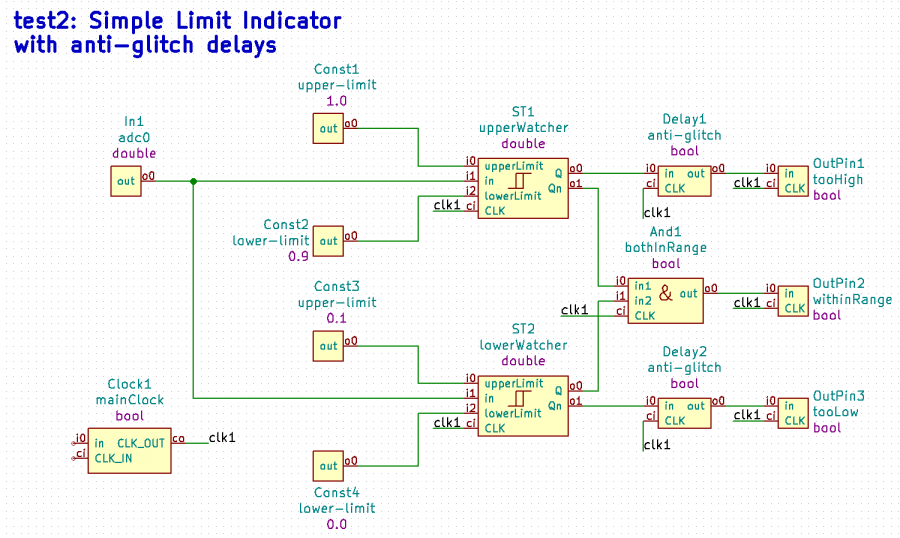
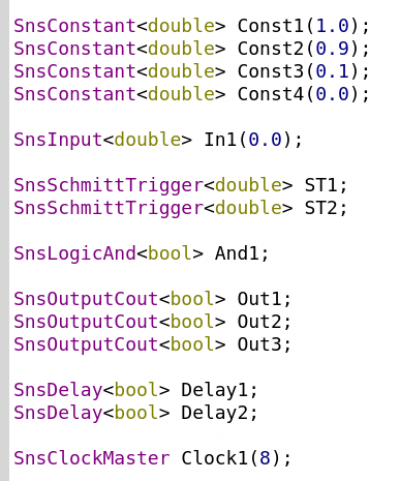
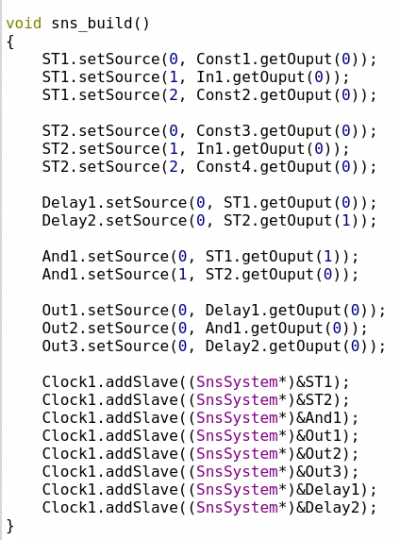
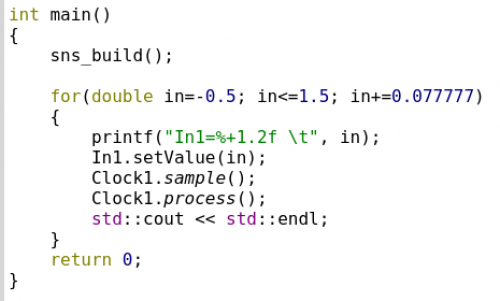
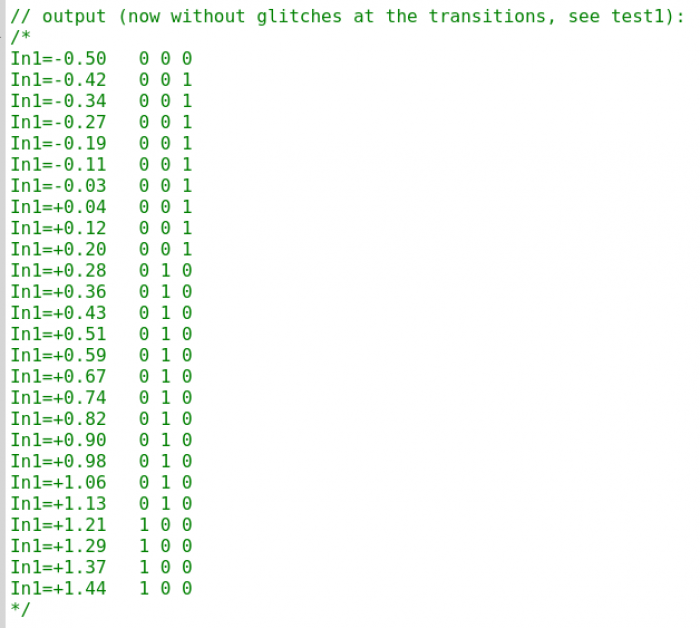
===== Source Code =====
* https://gitlab.com/KarlZeilhofer/Snaiks-cpp-lib
* https://gitlab.com/KarlZeilhofer/Snaiks-kicad-lib
* https://gitlab.com/KarlZeilhofer/Snaiks-manual-tests
===== Blue Prints =====
==== Sampled vs. Transparent Systems ====
=== The Problem ===
For some systems it would be handy, if they are transparent from input to output.
This means, that they do not consume a whole clock cycle. An example could be a simple And-gate. Perhaps one do not want this gate to introduce an extra clock-cycle, until the combined signal is visible on the output.
The drawback of this method is, that the update-order of all the systems is very important. If the user is aware of this problem, he can shorten latencies of complex systems.
In Snaiks example test1 we had a undesired behaveour, because the And-gate befor the middle output indroduced a delay of one clock. In transitions from „within range“ to „too high“ and to „too low“ undesired states were produced, were either 2 outputs were true at the same time, or where no output was true for one clock cycle.
This made the antiGlitchDelays necessary.
=== The Proposal ===
Every System has a flag transparent** which is by default false.
If it is true and sample() is called, update() is called from the sample() function:
class MySystem { ... bool transparent; bool sampled=false; ... void sample() { sInput = *input; sampled = true; if(transparent) { update(); } } void update() { if(sampled) // avoid double update { sampled = false; output = ... } } ... }
This also makes the flag sampled necessary. Becaus the normal clock master calls every sample() and then every update(). A second update-run shouldn't change anything, but consumes perhaps unnecessay processing time.
Properties
A Snaiks component can have properties. For example:
- monoflop period
- schmitt trigger limits
- saturation limits
- corner frequency or filter-type of a digital filter
- filter coefficients
- gain value
- value of constants
A property consists of
- a value
- a name
- a persistent initial value
- a setter method
- a getter method
Info-System
A system generated by Snaiks should be fully discoverable and manipulatable during runtime.
Use cases
- change filter characteristics
- change regulator parameters
- adjust offset or gain
- change system constants
- change enable/disable flags
- reset a component or the whole system
- start/stop recording
Needed Features
- list inputs and outputs of an object
- list properties of an object
- change property values permanently

